How to Make British tea? I’ll show you how my step by step instructions (using British teabags). Although you can use fancy teacups, this is all about everyday tea-making in in a teapot, and using mugs.
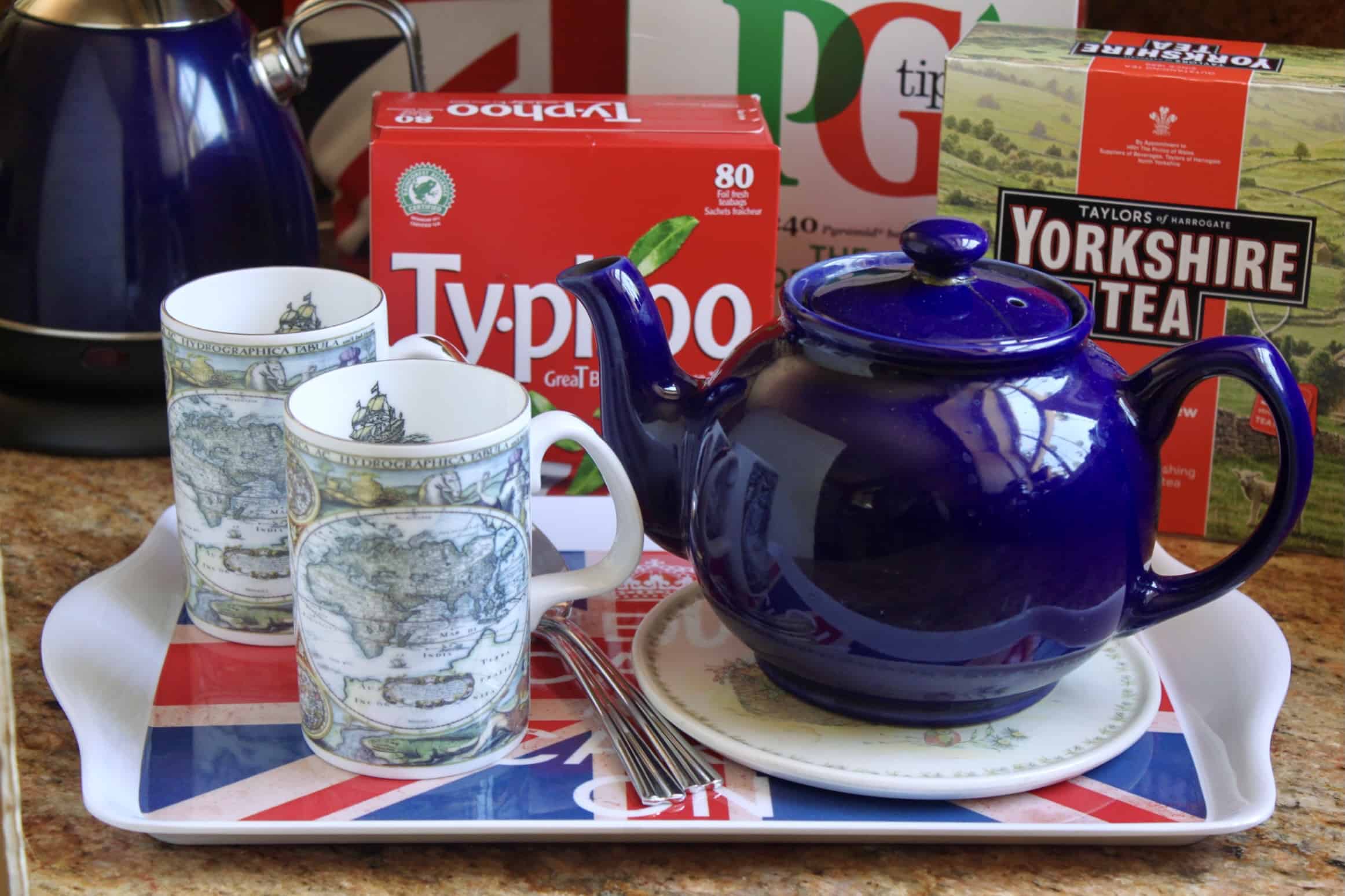
As someone who grew up in Scotland drinking tea, and having it for the first time in a baby bottle (think I’m kidding?) I believe I am knowledgeable enough to direct you on how to make a good cup of British tea. Is it good enough for fine china? Sure, but it’s more typical of tea served in a mug (or beaker).
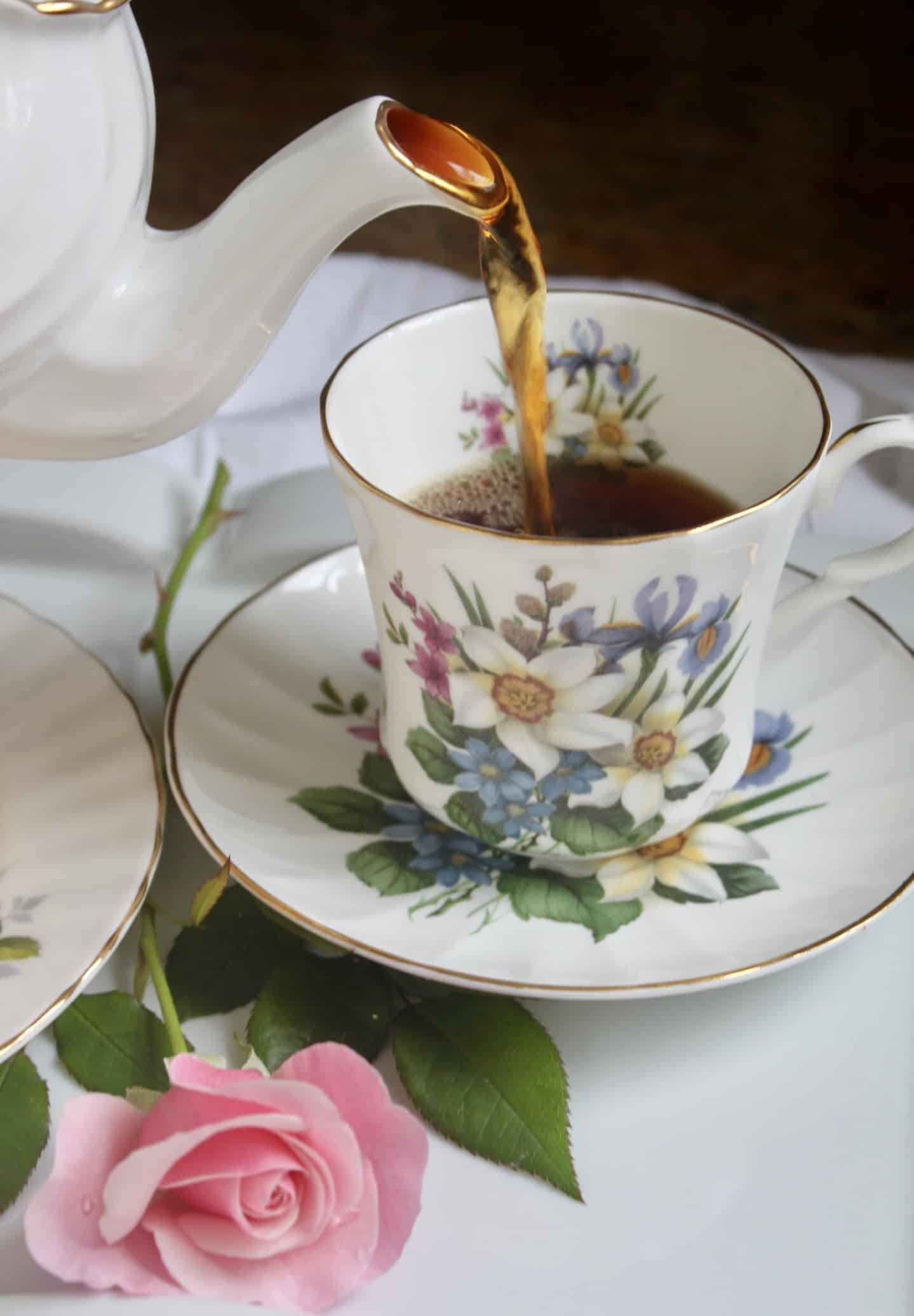

As an Amazon Associate I earn from qualifying purchases.
Let me clarify, this is just an everyday cup of tea, not a fancy, loose leaf, formal afternoon tea tutorial. As in, the type of tea you’d drink if you pop into someone’s house in the UK.
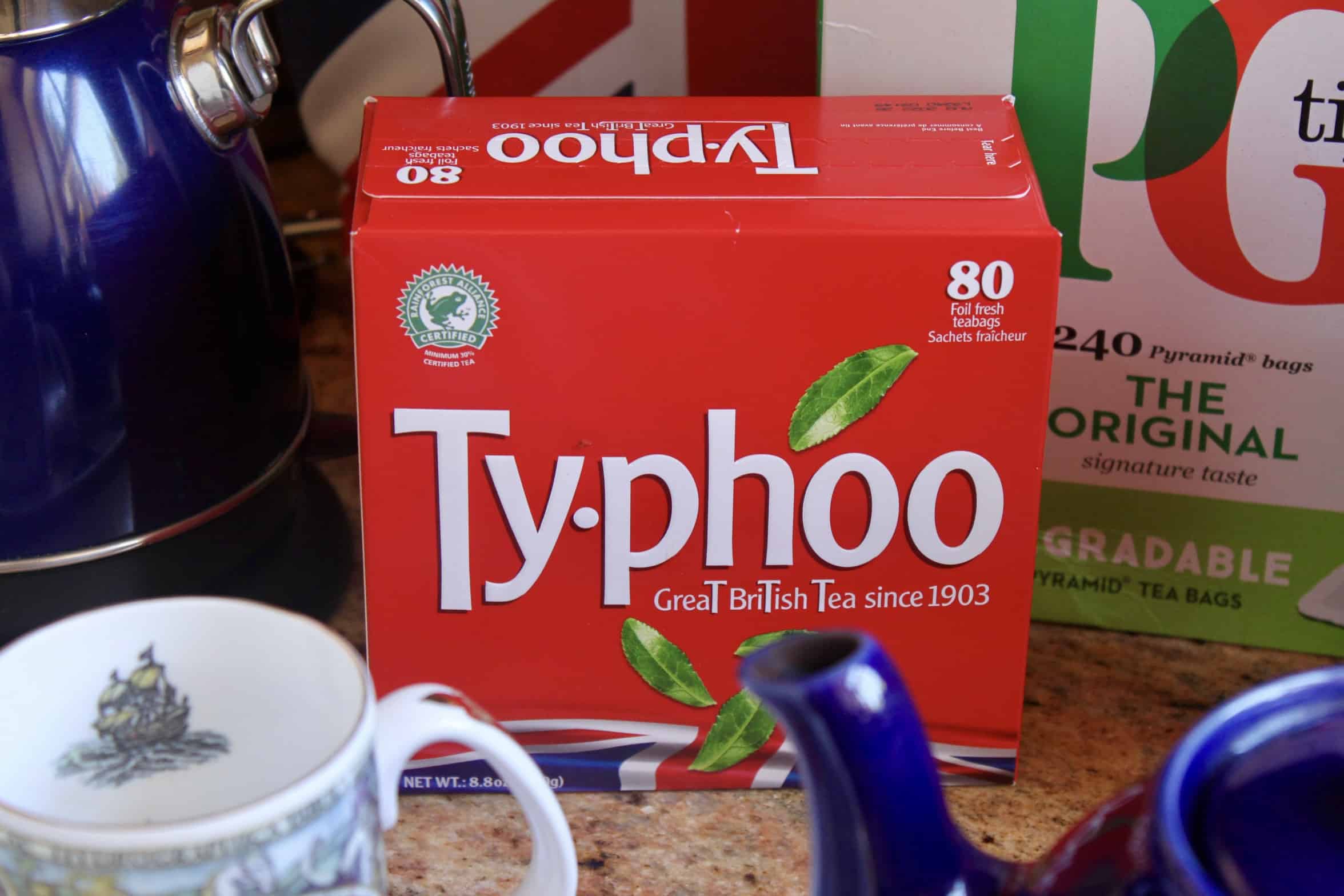
If you’d like a fancier tea to give as a gift, to treat yourself, or for hosting, I would highly recommend Brodie’s Tea from Scotland. It’s a bit more expensive but the flavor is slightly more robust—not to mention the cute packaging (and if you like them, use my code CHRISTINASCUCINA for 10% off)!
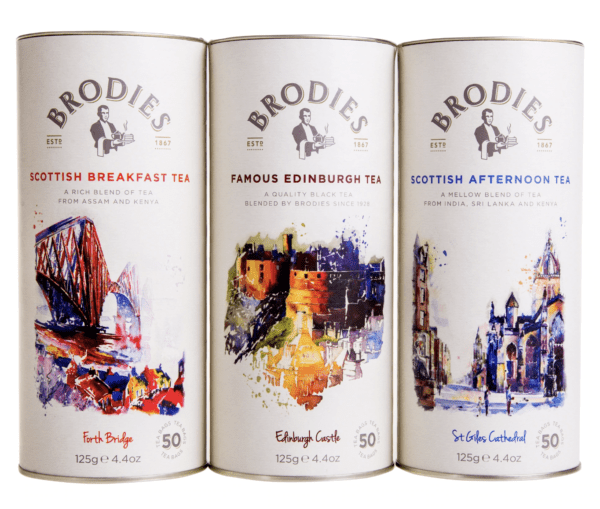
My American “tea vs coffee” theory.
I have a theory that from the day of the famous Boston Tea Party, Americans continued their boycott of tea for a very, very long time. Given tea’s association with the tyranny from the “mother country,” this is the reason that I think coffee became the preferred hot beverage in this country. Brits like coffee in their cake, haha! What do you think?
A classic British bake: Coffee and Walnut Cake
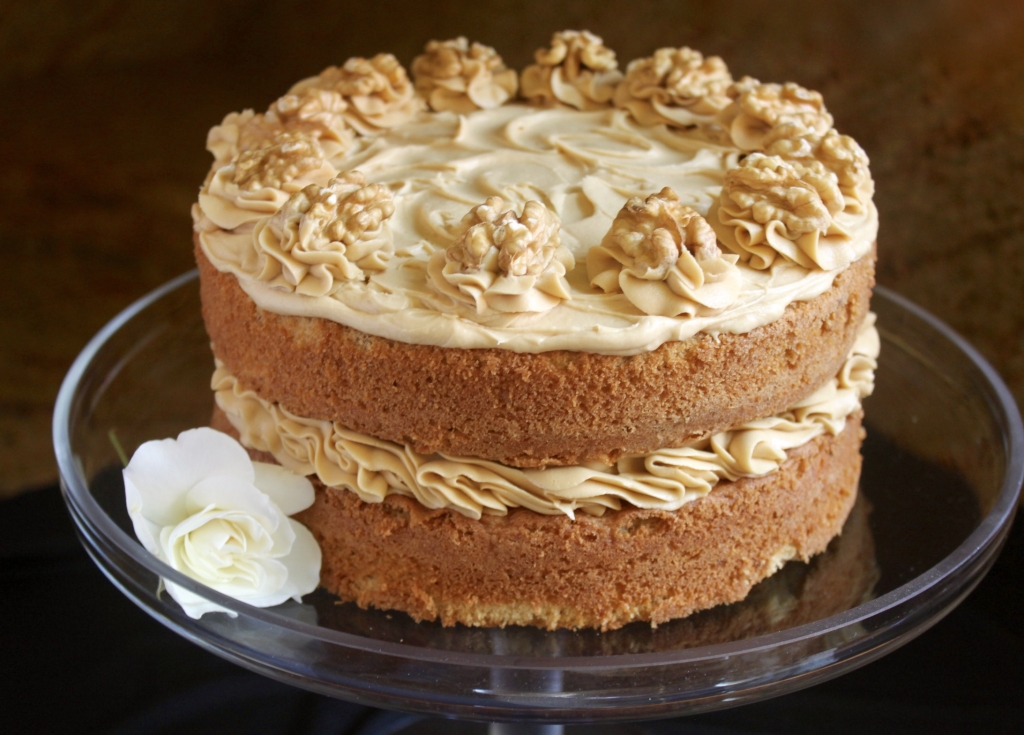
Tea is an institution in the UK. Its fibers are woven into the British culture in such a way that it is difficult to describe to a “non-Brit.” I came across this video a while ago and was so awed by the impact a hot drink can have on a country.
FYI to Americans, Eastenders is a popular soap-opera type show in the UK. When the show finishes, most viewers turn the kettle on for a cuppa resulting in a huge surge for electricity!
Here’s a proper scone recipe for you. 😍
British Tea Bags
I put “proper” in quotation marks because this is my version of how to make and everyday morning or afternoon mug of tea. It’s not the “proper-proper” tea that’s made with loose leaf tea, of course.
That’s more for a leisurely afternoon tea, but this is an everyday process with tea bags which is less time consuming. In the UK they say to put one teabag per person and “one for the pot.” However, in my opinion that’s too strong for most people in the US and Canada who are used to a weaker beverage.
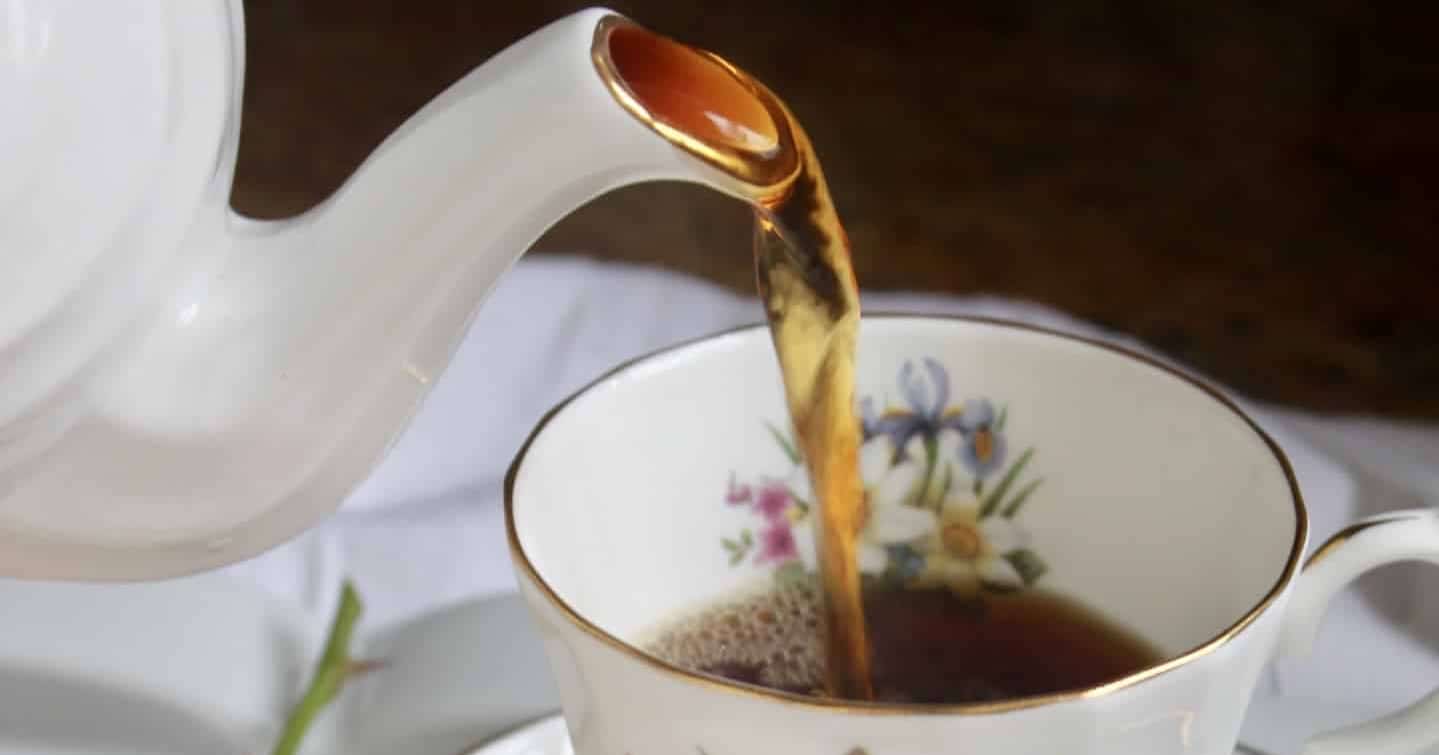
If you are using a British brand of tea, which is already much stronger and has a lot more flavor than most US tea brands, you might just want to use a teabag per person. I like Ty-phoo and PG Tips for everyday tea, which are imported from the UK (I buy them on Amazon when I don’t fill up every available spot in my suitcase when I return from a trip 😬).
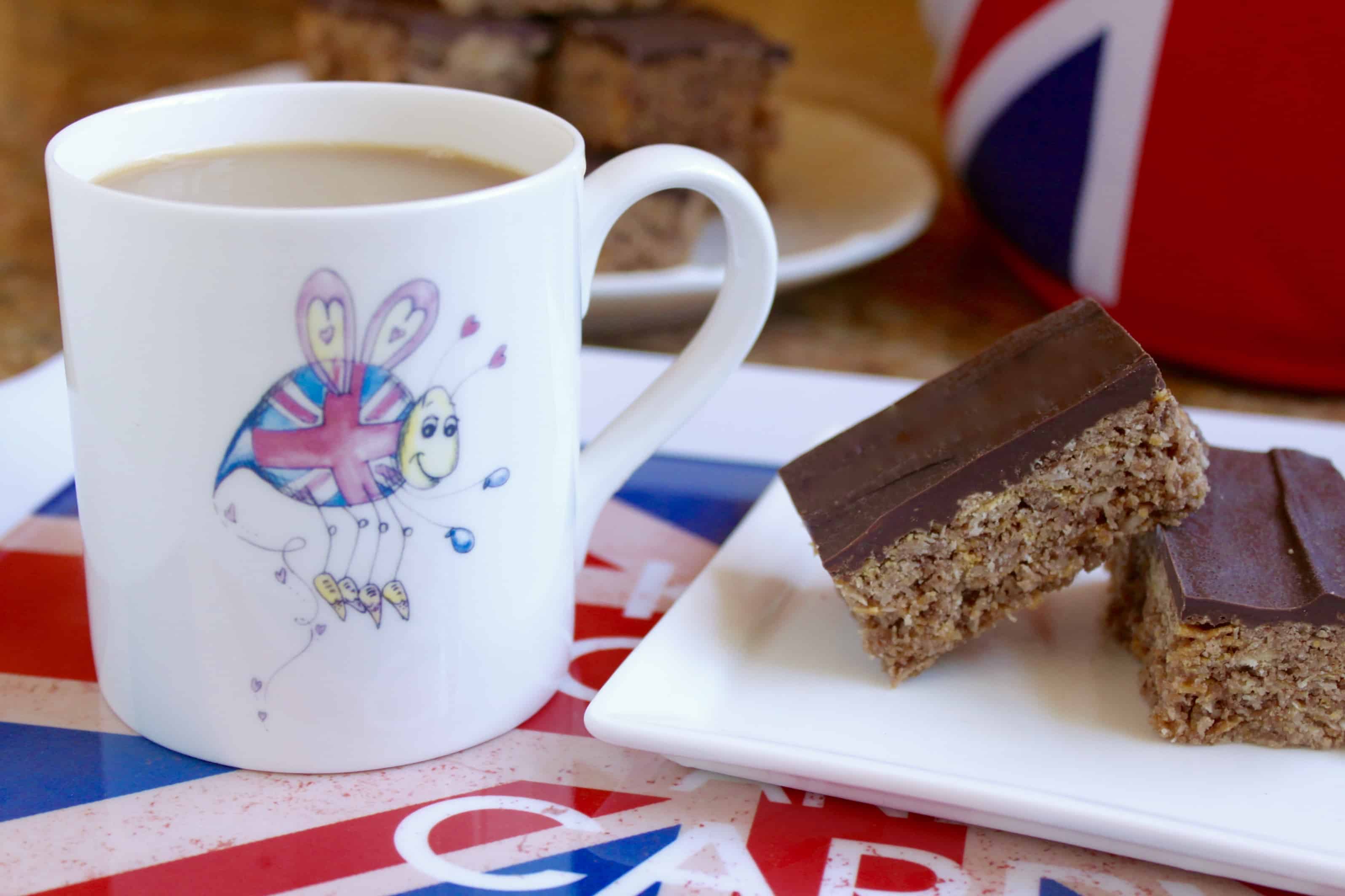
Three teabags for a 32 ounce pot, not completely filled to the rim (about 4 cups) is perfect for my family, but if you decide to try this brew, experiment and see if you like it stronger, and adjust accordingly.
Get the recipe for Chelsea buns!
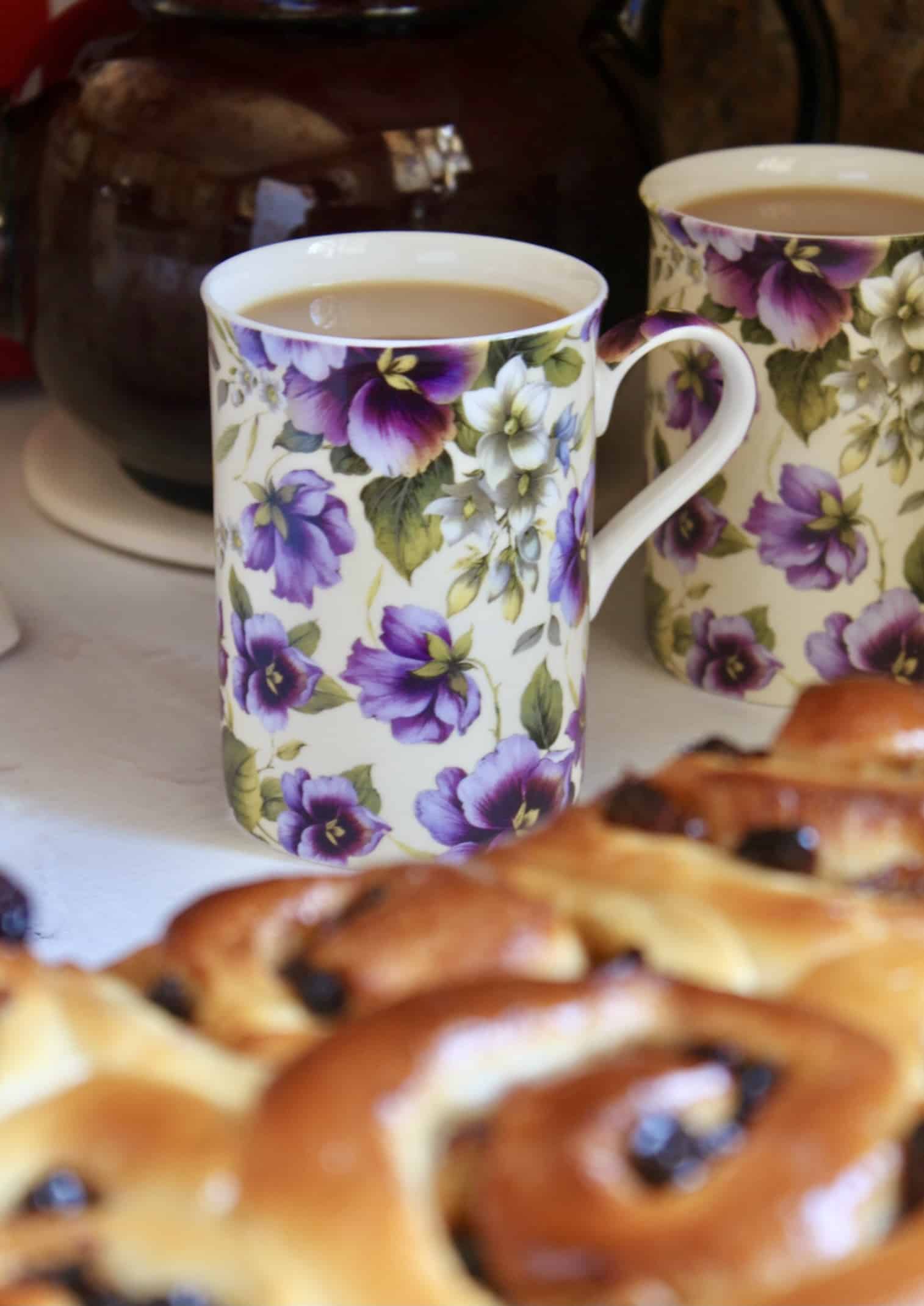
How to Make a Proper Cup of Tea
First of all, a proper-proper cuppa is made with loose leaf tea, but most of us don’t have time for that on a daily basis, two or three times a day.
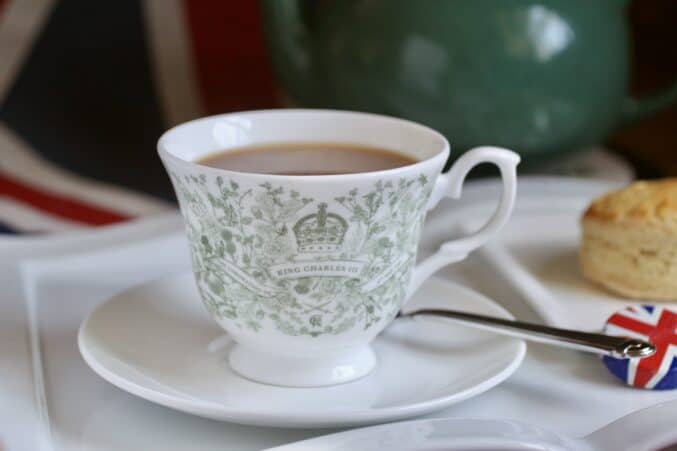
So this is mostly aimed at US households who are used to a Lipton teabag in hot water in a mug. This will be a big change in flavor for those of you.
What do I Need to Make a Proper Cup of Tea?
- an electric kettle
- a proper teapot
- a trivet (optional)
- British teabags
- a tea cosy (optional, but highly recommended)
- china/porcelain mugs (preferably made in the UK/Europe/US) I love Roy Kirkham!
1. Boil the water.
First, bring water to a boil, but do not let it keep boiling. Remove it as soon as it comes to a boil. Hot water will not do. We want the tea leaves to infuse the flavor of the tea into the water, and tepid or hot water will not do this nearly as well as boiling water. I use an electric kettle because we make a lot of tea. One thing the British don’t understand about Americans is the lack of electric kettles in our homes. They simply don’t know how it’s possible to function without an electric kettle in the kitchen! 🤣 Again, I’m not joking!
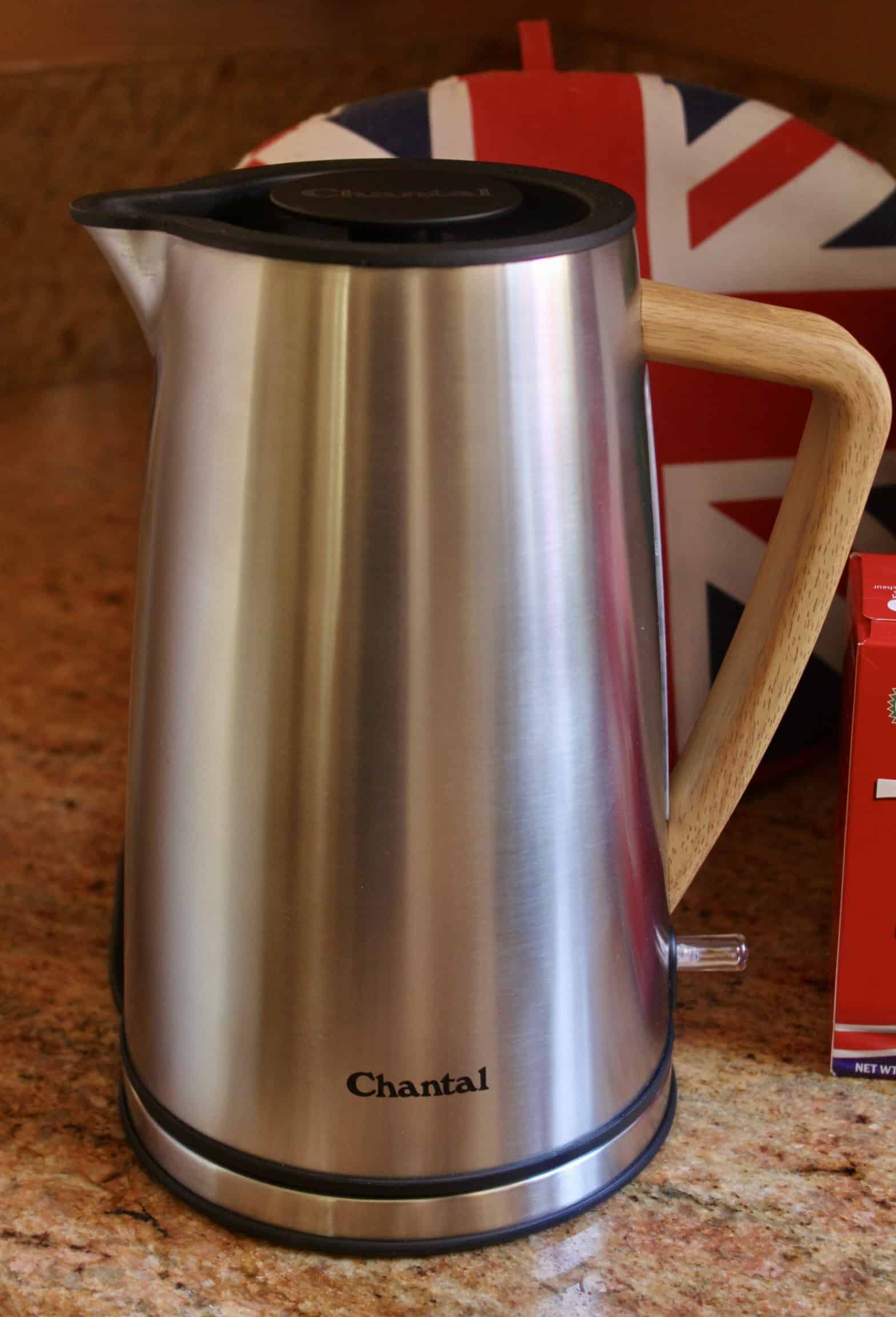
You will also need a good teapot, preferably a teapot made in the UK (which is sadly and apparently getting very difficult to find.)
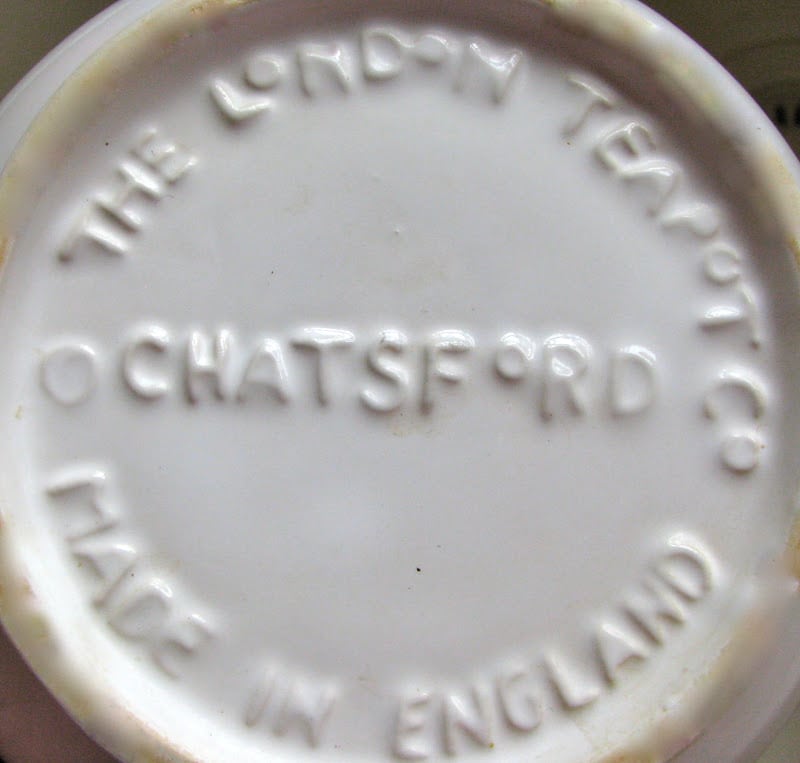
However, there are other choices (I stay away from Chinese made, due to history with lead and other chemicals in their products.) My friend gave me this French teapot by Guy Degrenne which is a bit pricy, but oh so chic!
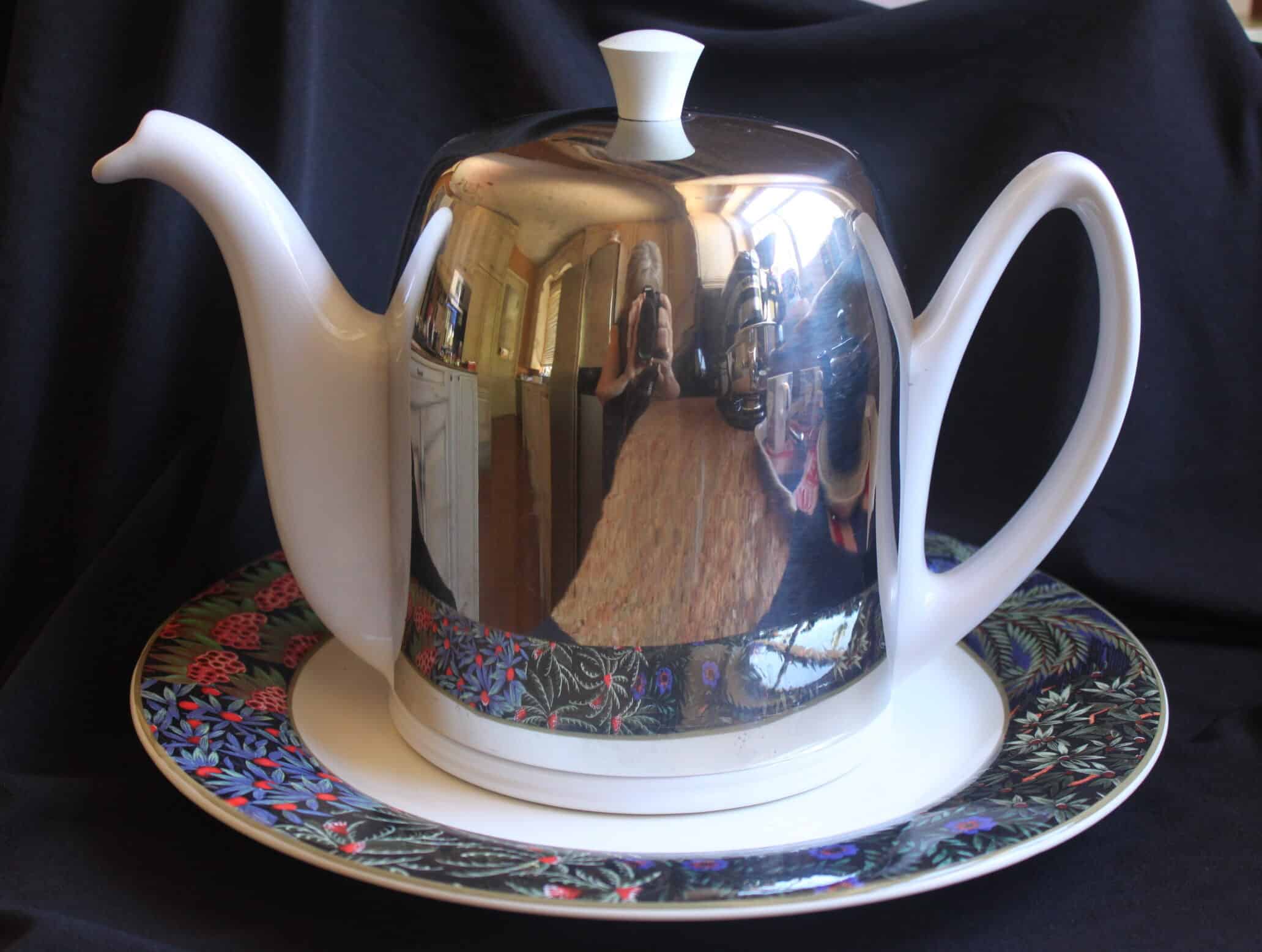
I bought this little melamine trivet at a charity shop in the UK to keep my teapot warm when making tea. I have granite countertops which will cool off the pot more quickly than I want. I like these wooden trivets (if you’re going to buy new) because they are more eco-friendly than melamine.
2.Warm the teapot for the perfect cup.
So, when the kettle is almost boiling, put some water in the pot, just to warm up the teapot. Return the kettle to its base (or stovetop) to make it come to a full boil. Swirl the hot water around the teapot and then drain it out. Make sure to have your teabags ready.
3. Add the tea bags and water to the pot.
I sometimes use a PG Tips and a Typhoo teabag together. This is something my daughter started doing, and we all liked the combination. When the water just comes to a boil, put the teabags in the teapot and immediately pour the water into the pot. Of course, using two or three of the same bag is obviously fine, too.
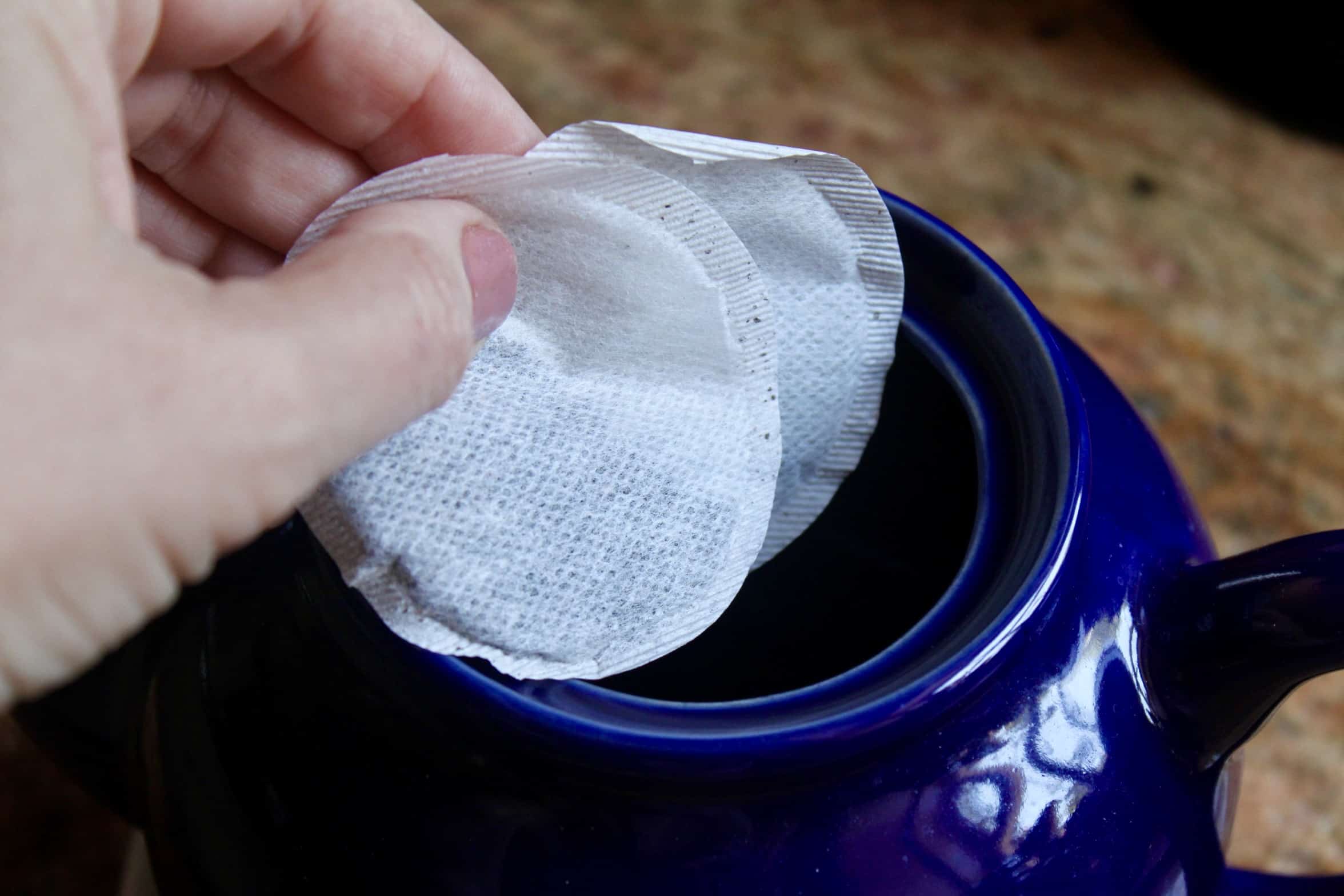
4. Use a tea cosy (if you have one).
Next, if you have a tea cosy, cover the pot. If not, use a kitchen towel or something to keep the pot warm. You’ll discover that this also makes a big difference in the outcome of the flavor of the brew. It also keeps the tea hot for a longer period of time, making a second cup more desirable.
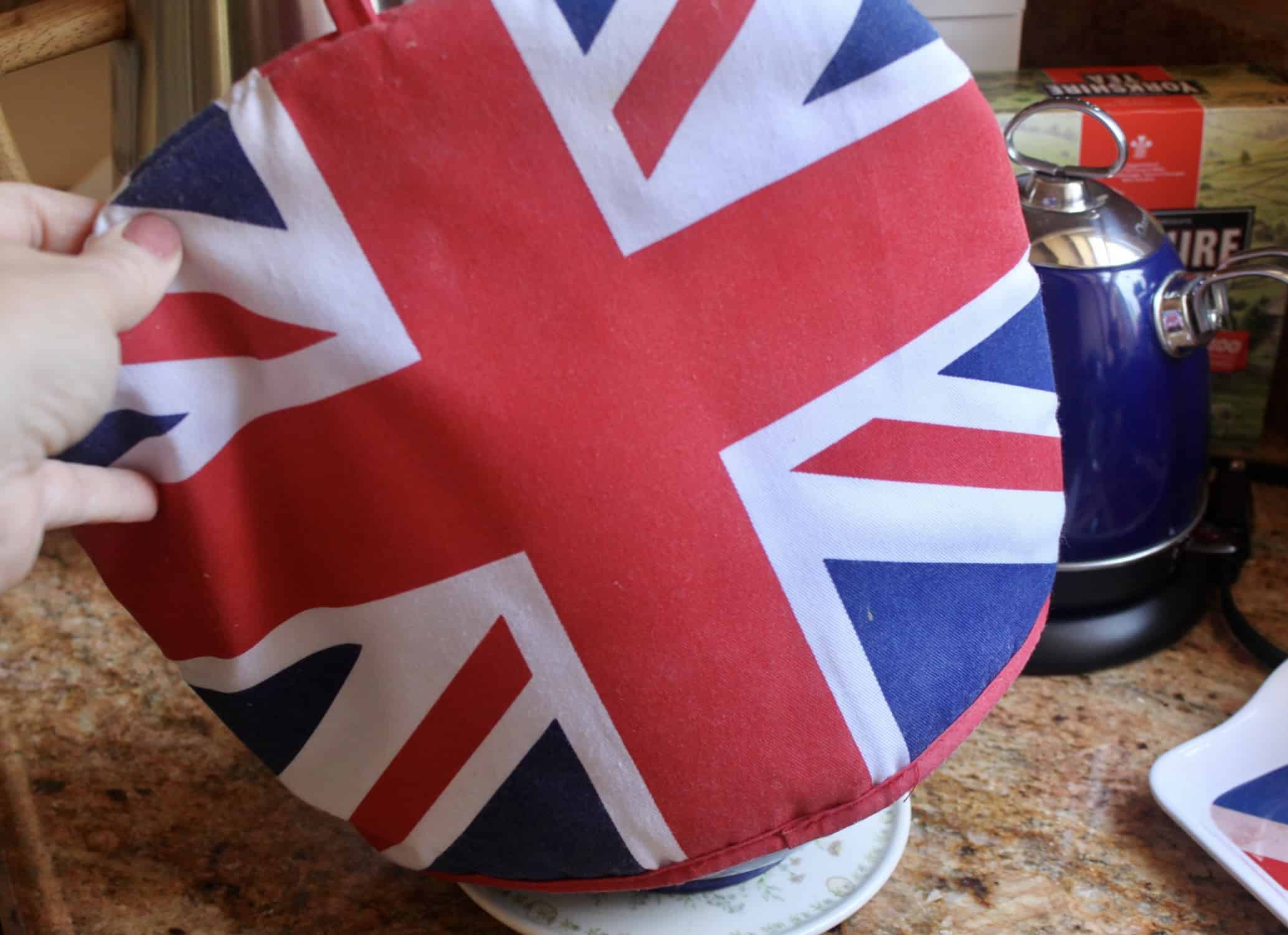
5. Steep the tea.
Steep for about 3 to 5 minutes; the longer you leave it, the stronger it will be. (Three minutes in a teapot is rather weak for me.)
6. Pour the tea and add the milk (and sugar, if desired).
Now it’s time to pour the perfectly steeped brew.
If you’re going to add sugar, add it before the milk so that it has a chance to start melting before adding the cold milk. Regarding the whole “milk, or tea first” debate, it used to be that milk went in first to protect the china from cracking, so that’s no longer a reason. Now, I think it’s a personal preference. I like to add the milk after so I can better control the ratio of milk to tea, and you may think I’m crazy, but I say it tastes better, too.
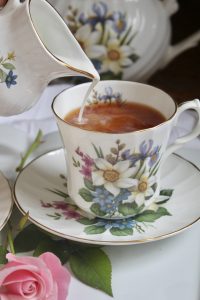
People ask:
What Kind of Milk do British Put in Tea?
Usually, and in the past it’s been whole milk that Brits use in their tea. In the US, 2% milk is passable, but don’t offer me 1% or even talk to me about skim milk. The cream that’s in whole milk adds a lot to the flavor of a cuppa. Just know that you should never add cream to a cup of tea! It’s just not done and will make your tea taste terrible.
Now, enjoy with a piece of shortbread, Bourbon biscuit. Or perhaps an oatcake and some jam?
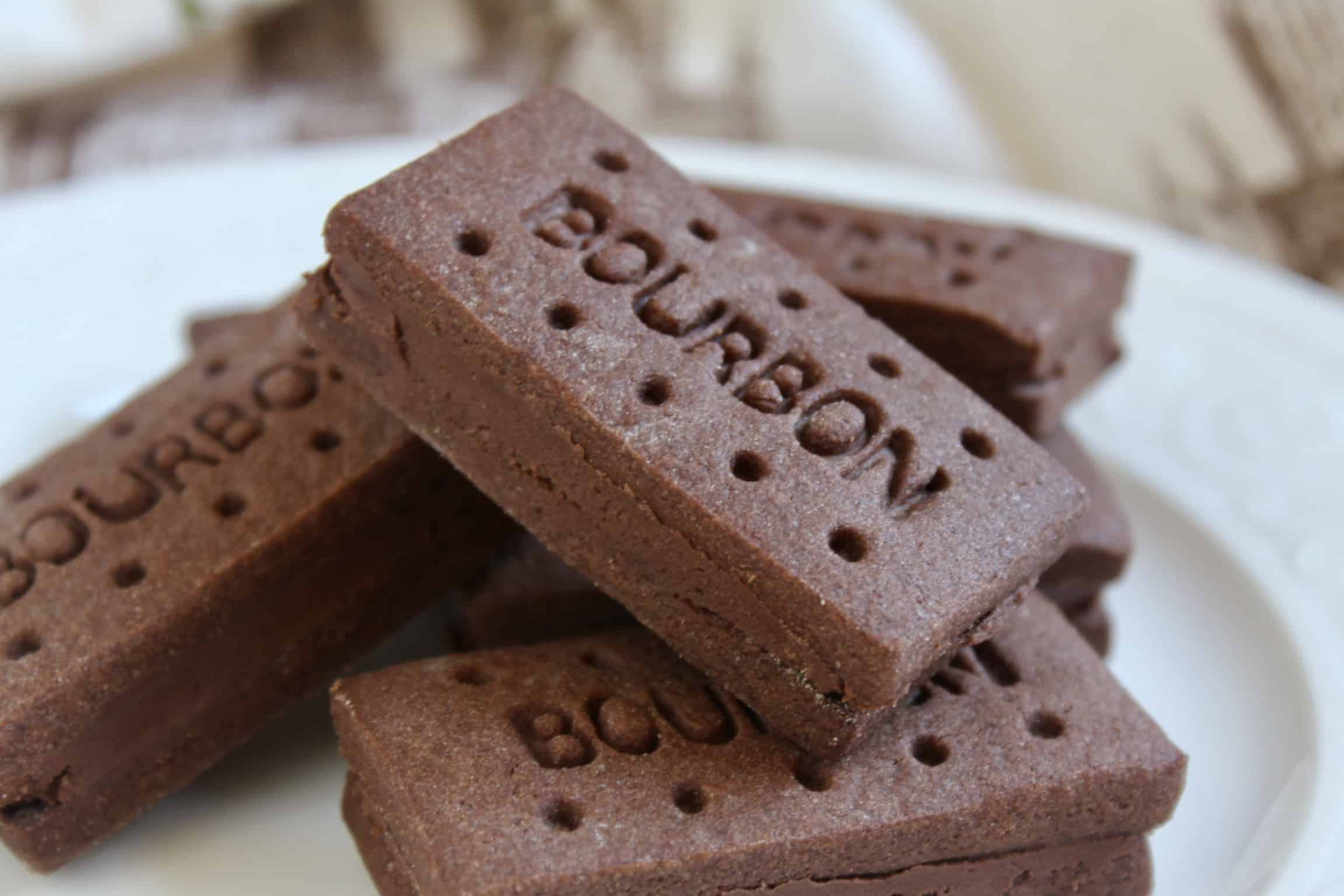
Or a custard cream or two, and delight in the fact that you have been let in on a bit of British culture!
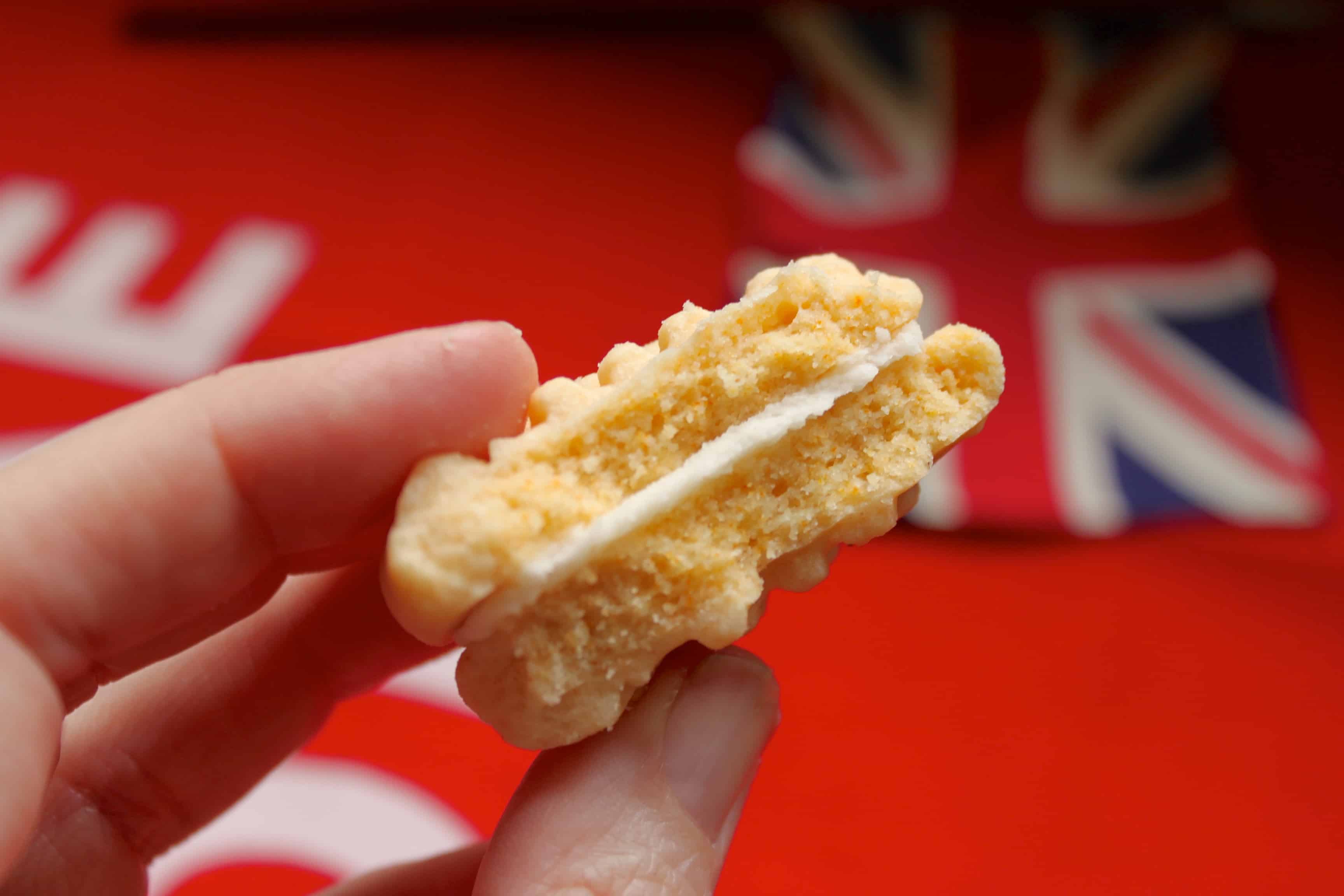
My friend, Cynthia at What a Girl Eats has a lovely lavender shortbread recipe.
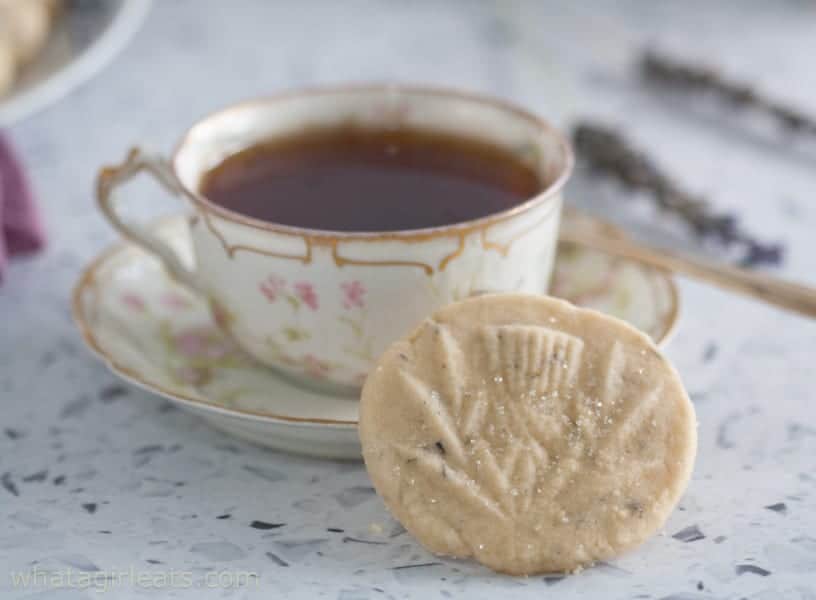
Enjoy with any snack or cake, like this gluten free teabread! The possibilities are endless!
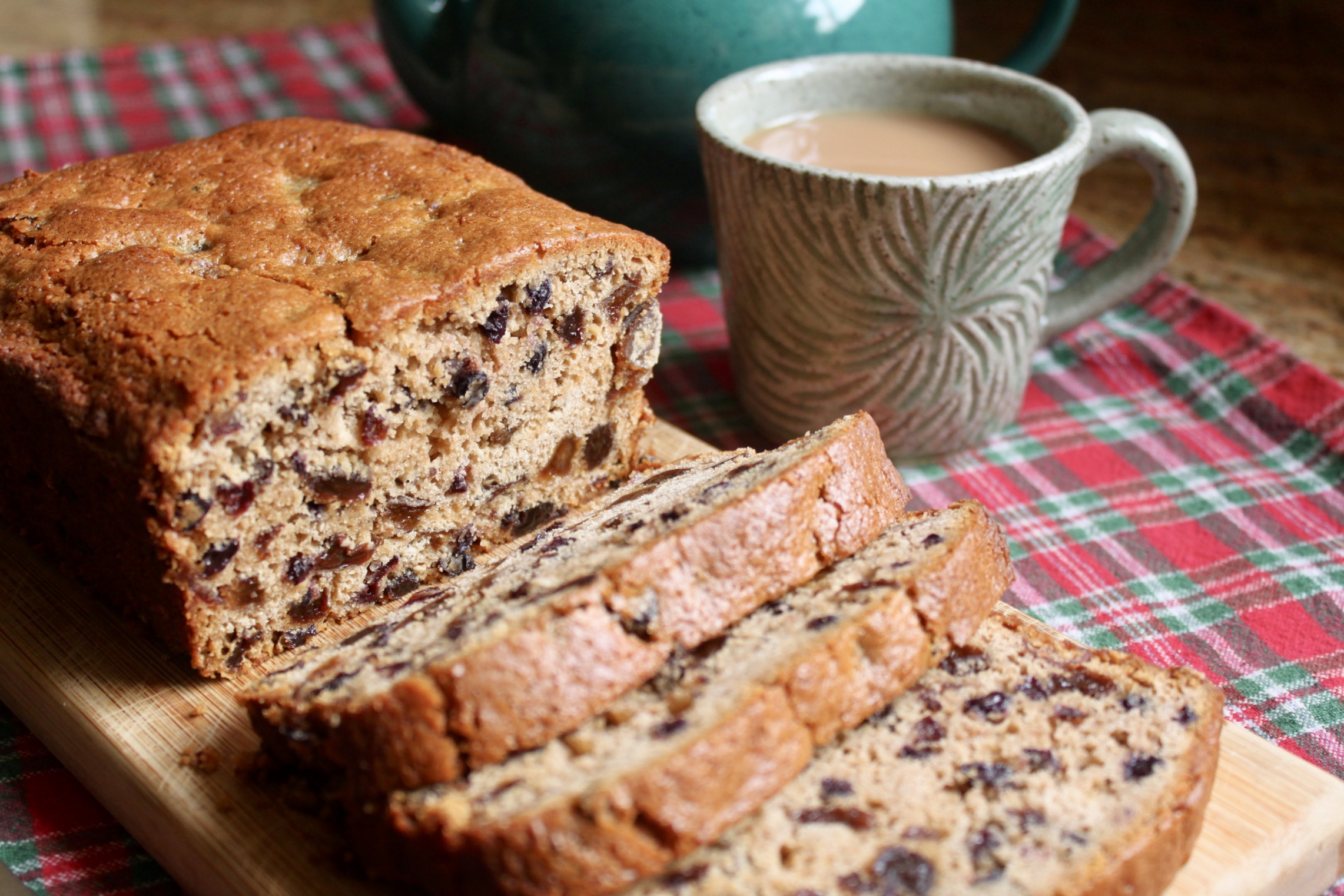
Sign up for my free subscription and never miss another post!
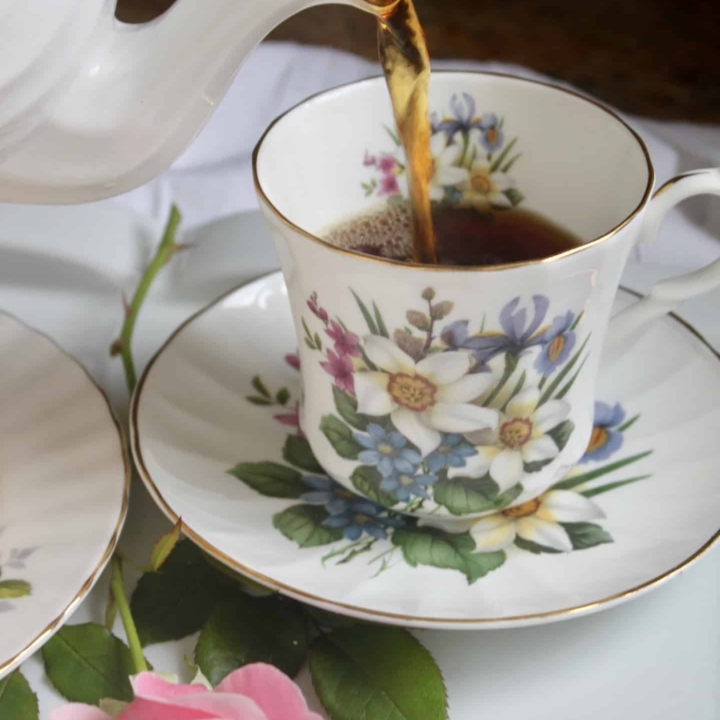
How to Make a “Proper" Cup of Tea (British Tea, that is)
How to make tea like a Brit.
Materials
- Tea pot
- British tea bags
Tools
- a kettle, electric or stovetop
Instructions
- Boil the water
- Warm the teapot
- Add the teabags and water to the pot.
- Use a tea cosy, if you have one.
- Steep the tea at least 5 minutes.
- Pour the tea and add milk and/or sugar if desired.
Notes
First of all, a proper-proper cup of tea is made with loose leaf tea, but most of us don’t have time for that on a daily basis, two or three times a day.
So this is mostly aimed at US households who are used to a Lipton teabag in hot water in a mug. This will be a big change in flavor for those of you.
Now for your Glaswegian
(Glasgow dialect) Lesson:
Basically, “to blether” means to chat–a lot.
“A blether” is someone who talks incessantly. Gee, I wonder why I have this mug? :)
Christina’s Cucina is a participant in the Amazon Services LLC Associates Program, an affiliate advertising program designed to provide a means for sites to earn advertising fees. This is done by advertising and linking to Amazon.com.
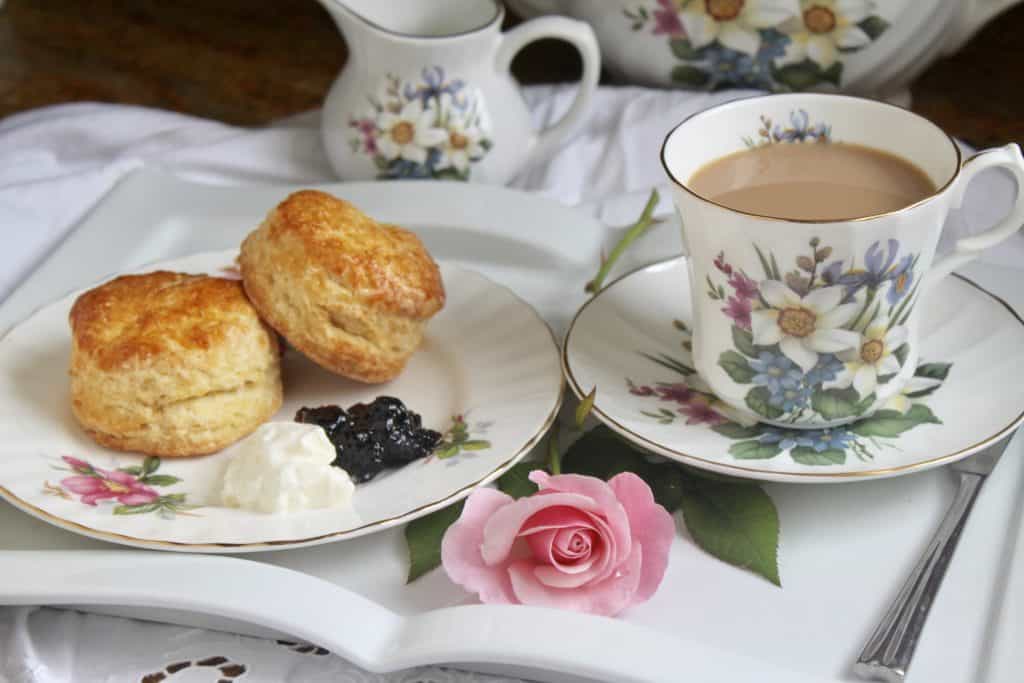
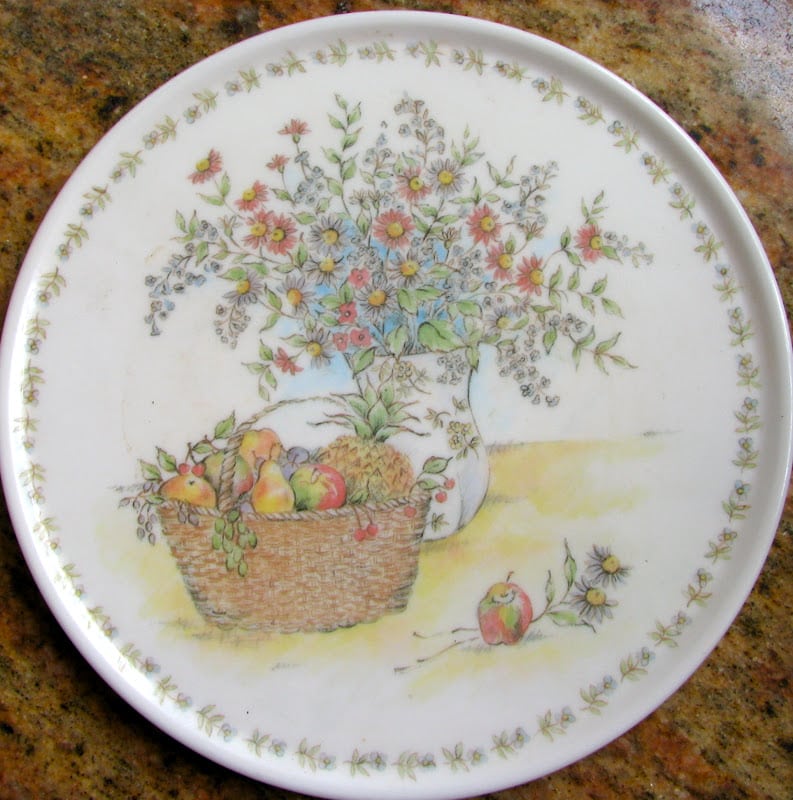

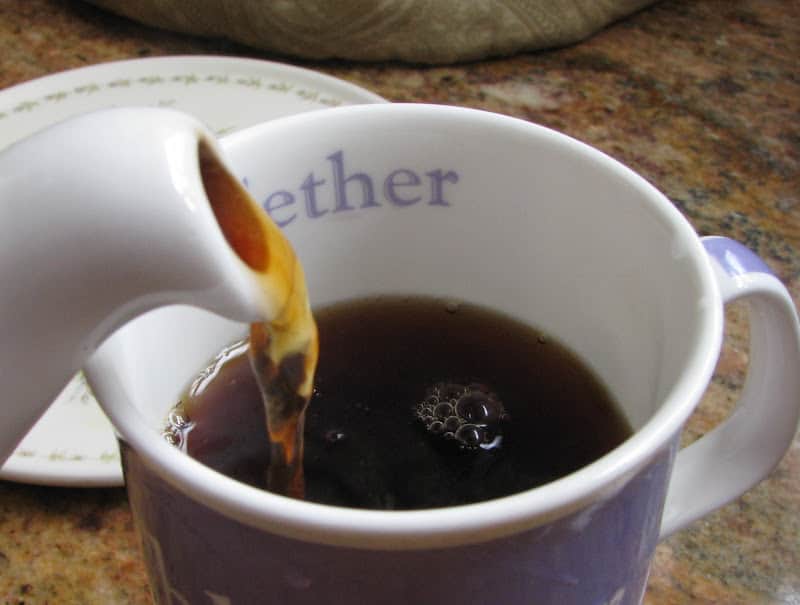
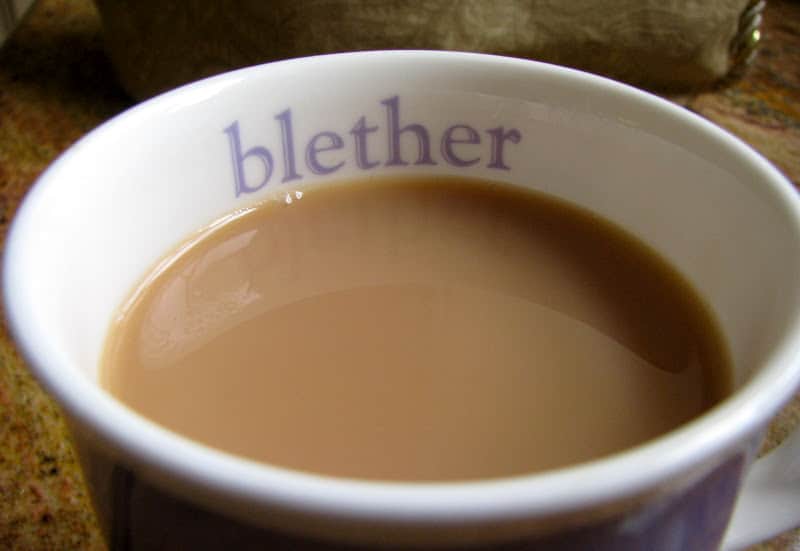
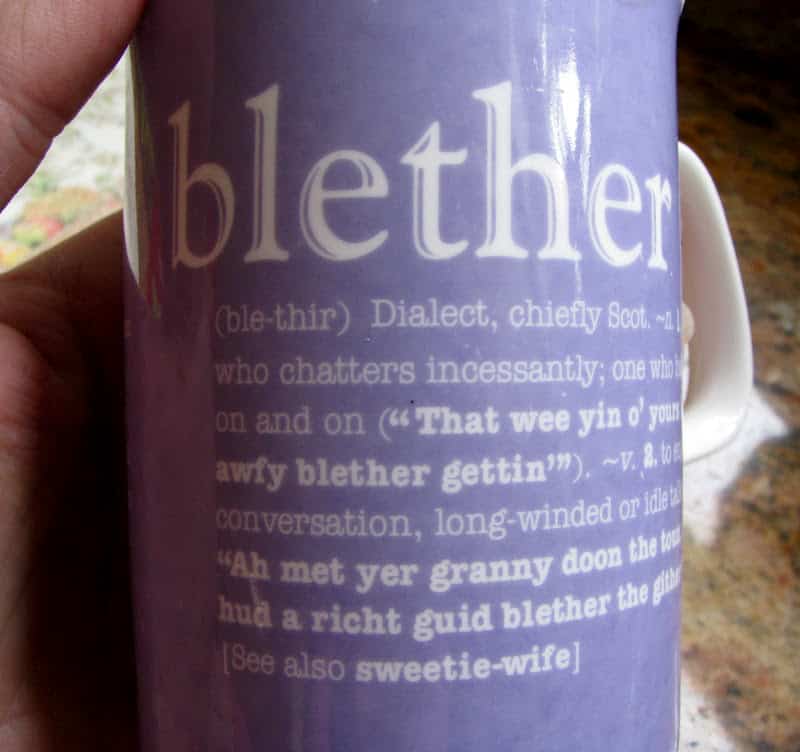
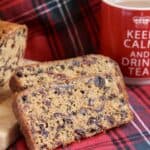
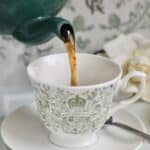

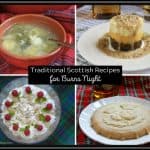
From doing some family research I found an ancestor left Scotland for the US after being betrayed by another clan that was siding with the English. I can certainly see people in this situation wanting to break ties and abandon tea. I also wonder if it was harder to come by after independence since presumably a lot of the Tea traders were British. It might have been cheaper and easier to source Coffee from South America.
I have an electric kettle and find it works great and doesn’t take too long, especially when only boiling 0.5L. Ours are slower due to standard outlets providing only 120V instead of 230V in the UK.
Do you always use a teapot even when making a single cup (is not doing so sacrilege)? I haven’t been bothered to buy one yet and it seems a bit of a bother if only making one cup. If it makes a huge difference I’ll buy one.
Is it sacrilege to use other sweeteners? I find I prefer locally sourced honey or agave nectar.
Cheers!
Hi George, to answer your questions, I do always use a teapot because I just like the flavor a lot better, and it’s not a bother to me at all. Making it in a cup is definitely not sacrilege as many Brits do it this way for ease. However, using honey or agave WITH milk would be frowned upon, but not if it’s plain. That said, if you like it with honey and milk, who’s to tell you not to drink it that way especially in your own home?
I do think a teapot is worth having if you enjoy tea. You’ll just enjoy it even more! :)
I too loved your article & have subscribed, thank you so much. I have plenty of E glass in my family Sheffields,Andrewss, as well as MxAndrew, but unfortunately I’ve never been. there i do hope to go & visit family in the near future.
I do hope you’re able to visit soon, David! It’d be a wonderful experience for you, I’m sure!
Thank you so much for this post and for the recipes. I’m especially looking forward to the gluten free tea bread. I have an electric tea kettle and use it often. A must have in my kitchen. I’ve heard of Brodies but haven’t tried it yet.
I was thrilled to see all my favourite brands of English tea: Typhoo, Yorkshire, and PG Tips. A few years ago I tried Mrs. M<Cartney's teas and I'm enjoying the English Breakfast, Earl Grey, and Maharshi Peach. You can find it here https://mrsmccartneysteas.com/
I'm so happy I discovered your website/blog. The Scottish recipes are most welcome. My ancestry is Scottish, English, Welsh, and Irish but I didn't learn of it until I was an adult. Making up for lost time perhaps. Anyway, thank you!
That’s so great to hear, Tambra! Enjoy finding all the new recipes to enjoy!
This article is wonderful! My family is from the South and I started drinking tea in a baby bottle too!
I have an electric kettle, but I’ve been putting my tea bags in it. Any advice for how to clean it?
Thank you!
Hi Brenda, oh yes, you don’t want to put your tea bags into the kettle. I have only ever used mine to boil water so I googled how to clean it and this is what every site is recommending. :)
This is exactly what I was looking for while researching my first novel, “An American attempting to appease a British colleague.” Thank you!
Sorry? Who’s the American?
Hi Jon,
I just wanted to say congratulations on writing /researching your first novel. I’m an author of genre fiction and nonfiction. Research is so much fun. I love it.
Wishing you the best with your book.
Tambra Nicole Kendall
Ok, this post reinforces what I’ve already read (and been doing) about making tea! I do notice that the amount of tea used results in a much stronger brew than I am used to or prefer, but that’s the American in me. However, I have a question. Do you remove the tea bags after steeping to prevent them from over steeping and making the tea bitter or is that a non-issue? I do know at afternoon teas, they leave the tea leaves in the bottom of the pot and you strain out as you pour a cup, so perhaps it’s the same concept for tea bags?
We never remove the bags, Erin. However, I will say that if you don’t like it too strong, you can totally take them out as the tea will continue to steep and get a bit stronger :)
I really enjoyed reading, “How to make a proper English Tea”. I have actually read it several times. I recently gave up coffee and started drinking tea in the morning. I want to try all of your recommendations from the tea bags to the electric pot. I also have china cups and saucers from my mother and wondered what the heck was I going to do with them. So glad I saved them. Unfortunately, I do not have English in my heritage. My family is mostly from Italy. Thank you very much for your wonderful article.
So happy to hear you liked my post, Toni! I too, have no British blood, only Italian (I was born in Scotland, though). That’s not anything to be disappointed in! Fantastico!! :)
I found this so interesting to read. I love all of your china cups and saucers. Out of curiosity, how many do you have? I have a few. Some had been my mothers, others were gifts. I love them, yet never use them. I find them so dainty and feminine. I should just get them out and use them before I die..lol…I think tea just tastes better in a china cup, rather than a mug. I am not English ( I’m Canadian), but my ancestors came here on a ship from Scotland in the early 1800’s. My grandma came here from Ireland as a young girl with only her sister during the potato famine. I have often heard of “scalding the pot” when making tea. We have always had a tea kettle in our home, but I know a lot of people don’t. I wouldn’t be without mine. Electric of course, but growing up it was a kettle on the stove. Anyways, Thankyou so much for this. I am off to look at that chelsea bun recipe!